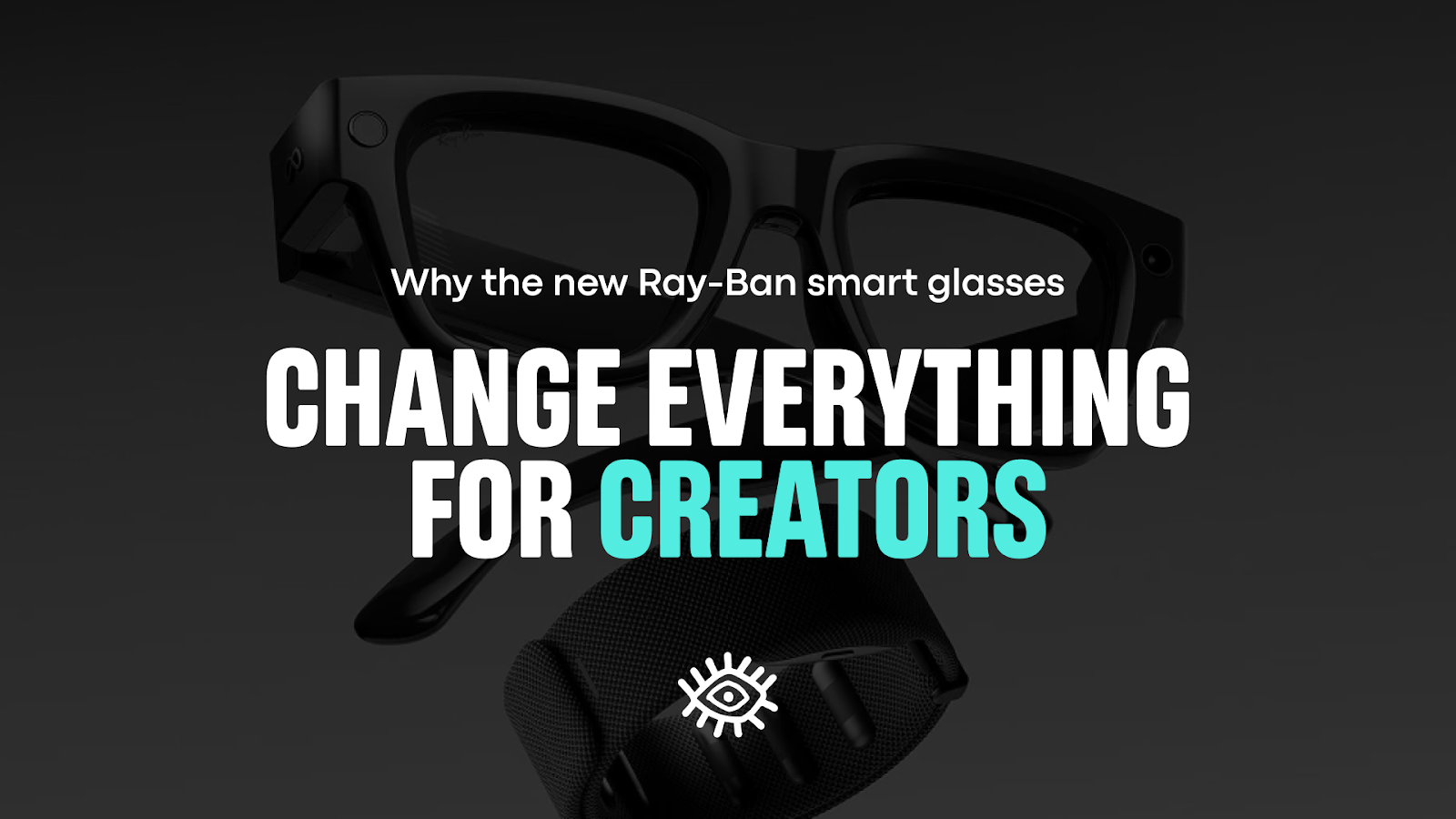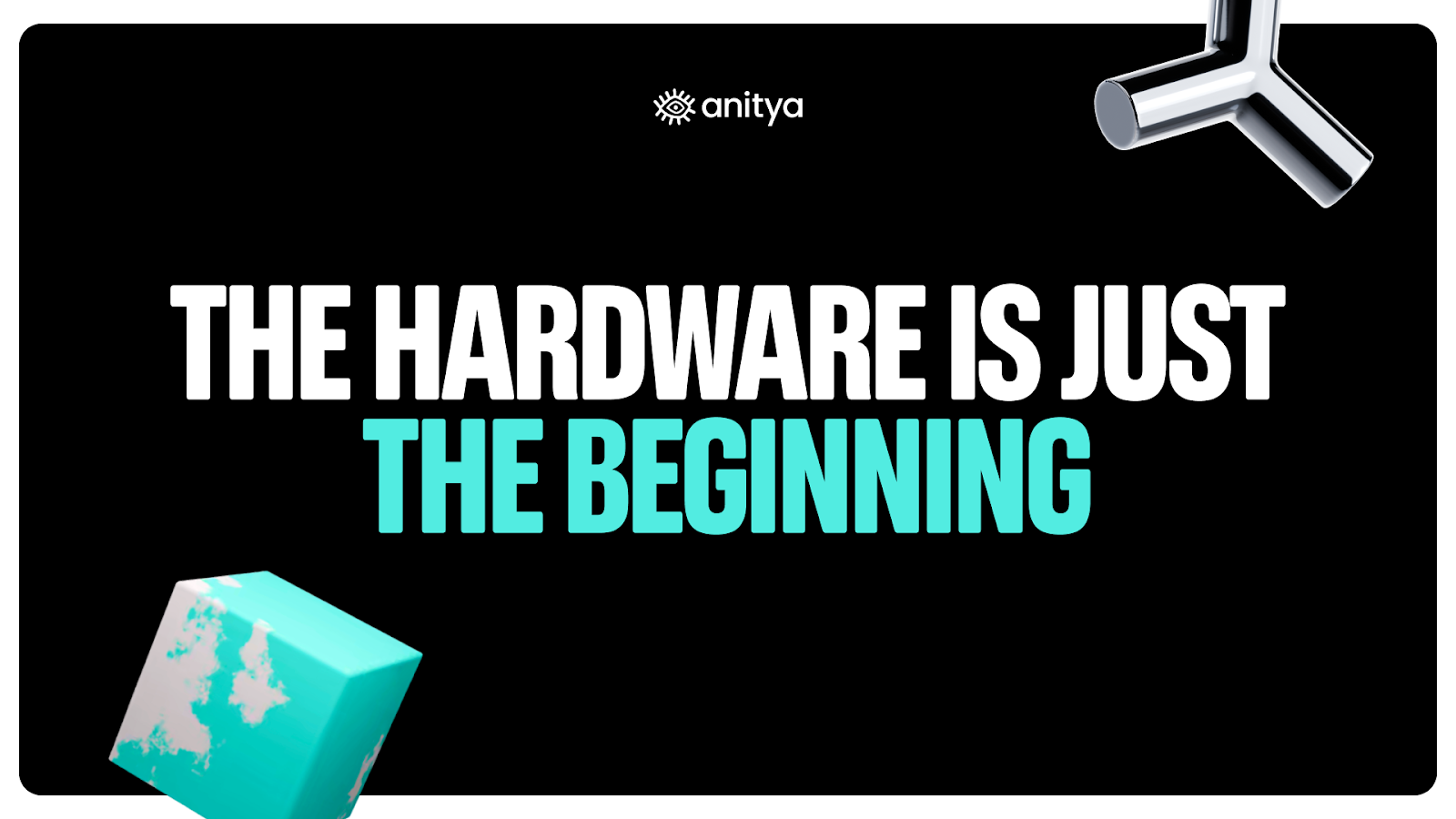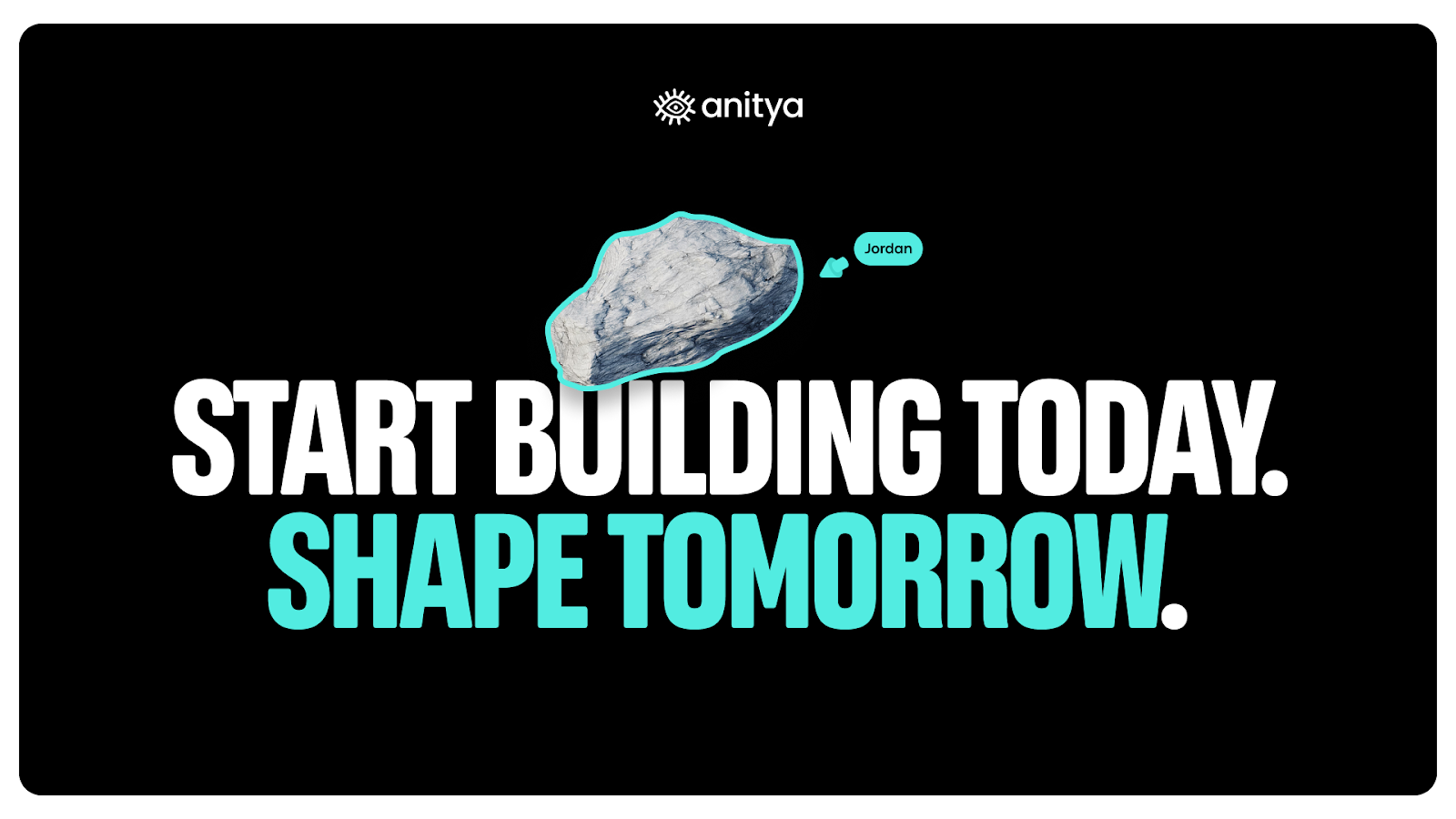Meta Just Delivered the First Step Toward the Future We've Been Building For
Why the new Ray-Ban smart glasses change everything for creators

Meta just shipped something that changes the game completely.
Their new Ray-Ban smart glasses aren't just another tech gadget—they're the first real step toward the ultimate interface where physical and digital merge. And for those of us building the infrastructure for this future, it's validation that we're on the right track.
Here's what Meta actually delivered, and why it matters more than most people realize.
What Just Changed Everything
Let me break down what Meta actually shipped, because the details matter:
A screen in normal-looking glasses. Not some bulky VR headset or prototype that screams "I'm wearing the future." These look like regular Ray-Bans, but with a sharp, full-color display that's bright enough to see in daylight and discreet enough that people around you barely notice.
Gesture control that actually works. You can navigate, type, and interact without talking to your glasses like you're having a conversation with thin air. The social awkwardness barrier just got a lot lower.
Real-time everything. Camera viewfinder, messaging, video calls, navigation, live subtitles—all happening in your field of view while you're living your actual life.
Here's the kicker: they're selling these for $800, probably at a loss, just to get them into people's hands. Meta isn't just building a product; they're building a market.
Why This Changes Everything
This is the first real step toward what I call the ultimate computer interface—the moment when physical and digital merge so seamlessly that the distinction becomes meaningless. These glasses prove that the future is closer than most people think.

Think about what happens when millions of people are wearing these glasses. Suddenly, everyone becomes a content creator by default. Every experience, every moment, every creative process can be captured, shared, and built upon. The demand for immersive content is about to explode.
And that's where things get interesting—and complicated.
The Application Revolution Nobody Sees Coming
Right now, building applications for these new interfaces is incredibly difficult. You need to know 15+ specialized skills, invest $50K-$500K in tools and training, and navigate a maze of platforms that don't talk to each other.
But when AR glasses become as common as smartphones, we're going to see an explosion of new types of applications. Not just content, but entirely new ways to visualize data, interact with information, and experience digital services. Imagine shopping apps where you see products in your actual space, educational apps that overlay information on the real world, or productivity tools that turn any surface into your workspace.
The current approach—where only technical experts can build immersive experiences—simply won't scale. We need tools that let anyone create the next generation of applications, and we need infrastructure that lets creators keep the value they create instead of handing it over to app store gatekeepers.
But there's an even bigger challenge lurking beneath the surface.
The Attribution Crisis Nobody's Talking About
When everyone's creating content across multiple platforms and tools, when AI is helping (or replacing) human creativity, when experiences are built by remixing and collaborating across the globe—how do we track who made what?
The current system is already broken. Creators work in Photoshop, Blender, After Effects, GitHub, and dozens of other tools, but there's no way to prove the full creative DNA of their work. Add AR glasses that capture everything, and the attribution problem becomes exponential.
Imagine you're wearing these glasses while creating something. Every gesture, every decision, every iteration is potentially being recorded. But who owns that data? How do you prove you created something when AI was involved? What happens when your work gets remixed by someone else wearing their own glasses?
These aren't theoretical problems. They're about to become the defining challenges of the creator economy.
Building the Infrastructure for What's Coming

This is why I've been focused on building the infrastructure for this future. Not because I'm trying to predict what's coming, but because I can see it arriving faster than anyone expected.
The infrastructure needs to be ready before the demand hits. Creators need tools that let them build immersive applications without learning to code. They need attribution systems that work across every platform and interface. They need ways to monetize their work directly, without app stores taking 30% cuts.
Most importantly, they need to own their creative DNA and keep the value they create. This isn't just about making content—it's about building the economic infrastructure that lets creators capture the full value of the new generation of applications they're building.
The Race Is On
Meta just fired the starting gun. Apple, Google, and dozens of startups are sprinting toward the same finish line. The question isn't whether this future is coming—it's who's going to build the tools and infrastructure that creators actually need.
The companies that win won't just be the ones with the best hardware. They'll be the ones that solve the fundamental problems of creation, attribution, and direct monetization in this new world.
Because here's the thing: hardware gets commoditized. Interfaces become standard. But the infrastructure that empowers creators to build applications, own their work, and keep the value they create? That becomes the foundation of the entire economy. And this time, we have the chance to build it right from the beginning—without the middlemen taking their cut.
What This Means for You

If you're a creator, this is your heads-up. The interface revolution isn't coming someday—it's happening now. The creators who start building applications for this future today will be the ones who shape it and capture its value.
If you're building in web3, this is validation that the attribution and ownership problems we've been talking about are about to become mainstream concerns. The infrastructure for direct creator monetization isn't just nice-to-have anymore—it's essential.
If you're just someone who's curious about where all this is heading, welcome to the most exciting time in the history of application development. We're about to see what happens when everyone has the tools to build immersive applications and the infrastructure to own their work without giving up 30% to gatekeepers.
Ready to Build the Future?
This future is arriving faster than anyone expected. The question is: are you going to be part of building it, or just watching it happen?
If you want to be part of this future, there are two ways to start:
Try building something. The tools exist today to create immersive applications without coding. The learning curve is steep, but it's getting easier every month, and the economic opportunity is massive.
Join the community. The creators, builders, and thinkers who are shaping this future are already working together, sharing ideas, and building the infrastructure we'll all need.
The future isn't something that happens to us. It's something we build together.
And judging by what Meta just shipped, we'd better start building faster.
Want to be part of building this future? Join our community at earn.anitya.space or try creating your first immersive experience at anitya.space.
